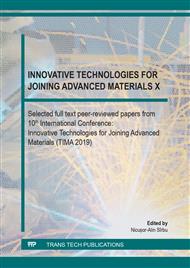p.93
p.108
p.113
p.123
p.130
p.136
p.142
p.149
p.154
Mechanical Properties of Duplex Treated Steels Obtained by Instrumented Indentation
Abstract:
Nowadays there is a growing need to reduce or control wear, corrosion and fatigue in order to extend the lifetime of mechanical parts, to make engines and devices more efficient, to develop new advanced products, to conserve material resources, to save energy and to improve the safety. The surface properties of mechanical parts may be improved through Duplex treatments. A Duplex treatment is a sequence of two treatments, combining their advantages and leading to better surface properties. A Duplex treatment consisting in nitriding and work hardening through shot peening has been chosen as a solution for improving the properties of EN 34CrNiMo6 alloyed steel. This paper reports the results obtained for hardness and bulk modulus on treated and untreated samples. The samples were examined using a Dynamic Ultra Micro Hardness (DUH) tester under a set of maximum loads ranging from 100 to 1000 mN. Each sample was subjected to load-unload cycle under the same amount of maximum load and the loads vs. penetration depth curves were plotted. Results showed a better mechanical behavior of Duplex treated.
Info:
Periodical:
Pages:
130-135
Citation:
Online since:
February 2020
Keywords:
Price:
Сopyright:
© 2020 Trans Tech Publications Ltd. All Rights Reserved
Share:
Citation:


